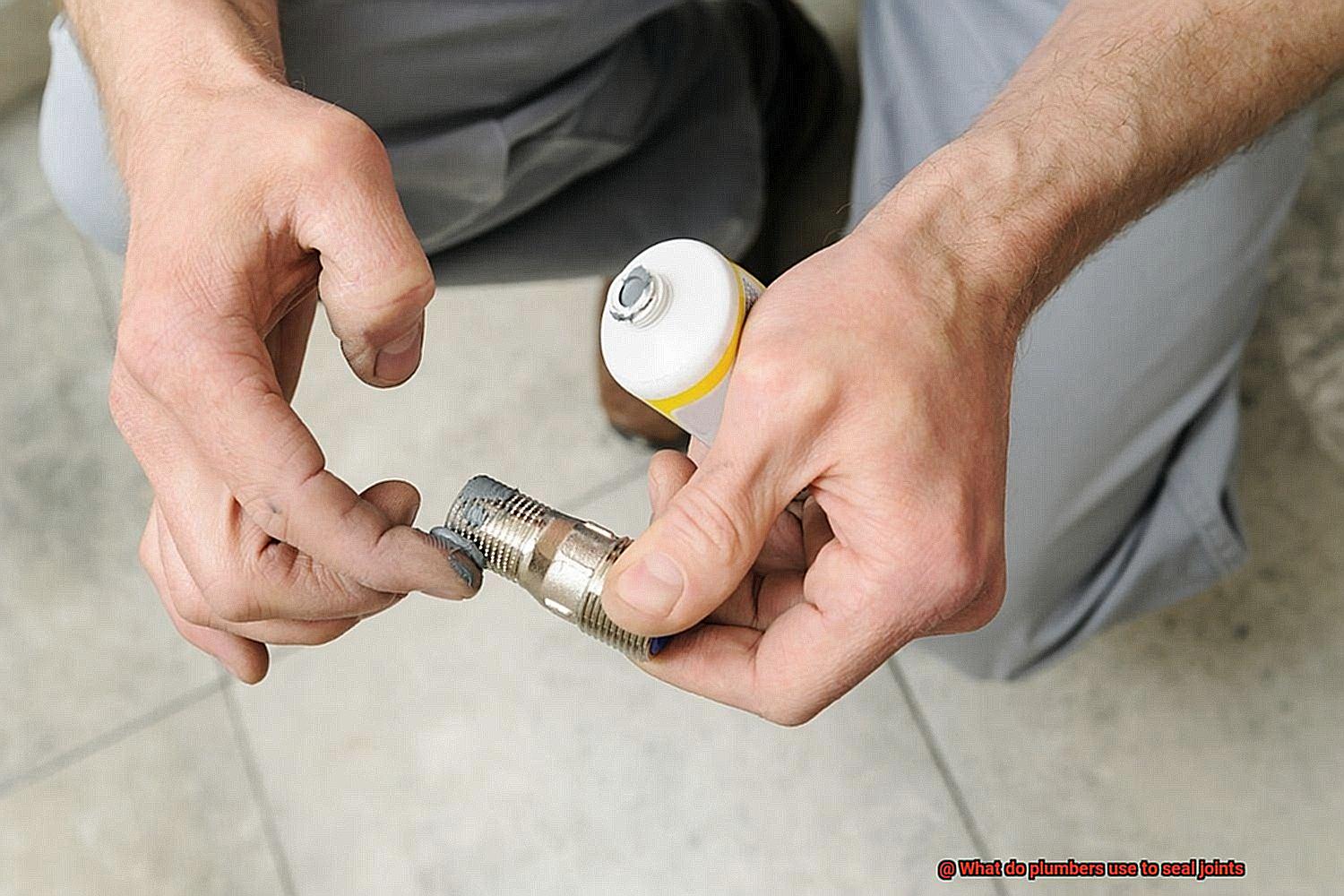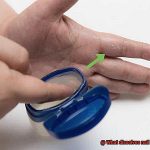Are you tired of constantly dealing with leaks in your pipes and joints? Do you find yourself frustrated by the never-ending cycle of fixing the same problem over and over again? Fear not, my friends, for plumbers have a secret weapon to solve all your joint-sealing woes. So, what exactly do plumbers use to seal joints? The answer is simple – they use sealants.
A sealant is an adhesive substance that plumbers use to seal joints and connections in pipes and plumbing fixtures, preventing leaks. It can be applied to almost all types of plumbing materials – plastic, metal, rubber, ceramic – you name it. Sealants provide a strong bond that prevents any water from escaping and remedying any potential leaks.
Now, you may be wondering what type of sealants plumbers use. Is it some sort of industrial-grade glue or a specialized adhesive made only for pipes? Actually, there are several types of sealants available on the market. These include silicone, plumber’s putty, Teflon tape, rope sealant, and epoxy. Each of these sealants has its own specific use. Plumbers choose which one to use based on the type of joint, the material of the pipes, and the intended use of the plumbing fixture.
Whether you’re a homeowner or a professional plumber, having an understanding of the different types of sealants available can help you choose the right one for your specific needs. Trust me when I say that peace of mind in your plumbing system can be achieved with these powerful sealants. Your pipes will thank you for it.
Thread Seal Tape – A Common Material Used by Plumbers
Contents
- 1 Thread Seal Tape – A Common Material Used by Plumbers
- 2 Pipe Dope or Thread Compound – Creating a Tight Seal
- 3 Gaskets and O-Rings – For High Pressure Applications
- 4 Adhesives and Sealants – Creating a Permanent Seal
- 5 PVC Cement, Silicone Caulk, and Epoxy – Different Types of Adhesives and Sealants
- 6 The Benefits of Sealing Joints with the Right Materials
- 7 How to Choose the Right Material for Your Plumbing System
- 8 Common Mistakes When Sealing Joints
- 9 Conclusion
If you’ve ever had a leaky joint in your plumbing system, you may have heard of thread seal tape, also known as plumber’s tape or Teflon tape. This thin and flexible material is a favorite of plumbers everywhere for its ability to create a watertight seal between two threaded components. But what makes this tape so popular among plumbers?
Firstly, thread seal tape is incredibly easy to use. Plumbers can quickly apply it by hand without needing any special tools or training. It’s also widely available at hardware stores and plumbing supply shops, making it an accessible option for both professional plumbers and DIY homeowners.
When it comes to creating a reliable seal, thread seal tape is unmatched. It’s designed to compress and fill in any gaps or imperfections in the threads of pipes and fittings, creating a tight seal that prevents water or gas from escaping. Once installed properly, this tape can last for years without needing to be replaced.
Moreover, thread seal tape is an affordable option for creating a watertight seal in plumbing systems. It comes in different widths and thicknesses, depending on the size of the pipe or fitting being sealed.
Plumbers can use thread seal tape on various types of pipes and fittings, including PVC, copper, brass, and stainless steel. However, it’s important to remember that the tape should always be wrapped clockwise around the male threads to prevent it from unraveling when the fitting is tightened.
While thread seal tape is an essential tool in a plumber’s kit, other materials such as gaskets or O-rings, pipe dope or thread compound, and adhesives or sealants may be used depending on the specific requirements of the plumbing system.
Pipe Dope or Thread Compound – Creating a Tight Seal
While thread seal tape is a popular choice, pipe dope or thread compound is another superhero among plumbing materials that deserves some attention.
At its core, pipe dope is a paste-like substance that fills any gaps or imperfections in the threads of pipes and fittings before they are connected. But it does so much more than that.
Not only does pipe dope create a smooth and even surface that prevents leaks, but it also helps lubricate the threads. This makes it easier to tighten the joints and ensures a snug fit – especially important when dealing with metal pipes and fittings that can be difficult to tighten without some added lubrication.
But not all pipe dopes are created equal. There are various types available on the market, each with specific properties and recommended applications. Some are designed for use with particular types of pipes, such as PVC or metal, while others may be more suitable for high-temperature or high-pressure environments. It’s important to choose the right type for your specific needs.
When it’s time to apply pipe dope, follow the manufacturer’s instructions carefully. Apply a small amount of the compound to the male threads of the fitting, spreading it evenly around the circumference. Then screw the fitting into place by hand until it’s tight, and use a wrench for any final adjustments.
One of the best things about pipe dope is that it can last for years without needing to be reapplied. Unlike thread seal tape that can wear out over time and require replacement, pipe dope will keep your plumbing system leak-free for the long haul.
Gaskets and O-Rings – For High Pressure Applications
Then gaskets and O-rings may be your best friends. These sealing devices create a tight seal between two surfaces, preventing any leaks or fluid loss. But choosing the right material and size is crucial for their effectiveness.
Let’s start with gaskets. These flat, ring-shaped components come in various materials such as rubber, silicone, or cork. Custom-made gaskets can fit specific applications and work by compressing between two surfaces when tightened. However, certain chemicals or fluids may react with certain materials, causing the gasket to break down over time. That’s why it’s important to choose a gasket that is compatible with the fluid being transported. Additionally, selecting a gasket rated for the correct pressure and temperature range of the application is crucial.
Now, let’s talk about O-rings. These circular sealing devices are made from materials such as rubber or silicone and are placed in grooves on the surface of a joint. When compressed during tightening, they create a tight seal that is resistant to high pressure and temperature changes. Like gaskets, choosing the correct material and size is essential to ensure their effectiveness. It’s also important to note that O-rings can be used in dynamic applications where there is movement between the surfaces they are sealing.
Adhesives and Sealants – Creating a Permanent Seal
Creating a permanent seal is crucial in any plumbing system to avoid leaks that can cause costly damage. Fortunately, plumbers have many options in their toolkit to ensure a strong and durable bond between surfaces. Among these are adhesives and sealants, which come in various forms and serve different purposes.
Adhesives are the glue that binds two surfaces together, while sealants fill gaps or spaces between surfaces to prevent fluid or air passage. Both have their uses in plumbing projects, and choosing the right one is essential for a successful outcome.
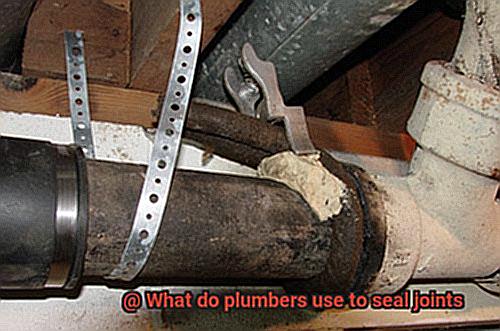
Epoxy is a popular adhesive used by plumbers for sealing joints in pipes. It’s a two-part adhesive made of resin and hardener that creates a strong bond capable of withstanding high pressure and temperature. Epoxy is versatile and works well with most materials, including metal, plastic, and concrete.
PVC cement is another adhesive that plumbers use specifically for PVC pipes and fittings. It chemically melts the surfaces of the pipe and fitting upon application, creating a strong bond when the two pieces are pushed together. It sets quickly, making it an excellent choice for fast-curing plumbing projects.
Silicone sealants are flexible and can withstand extreme temperatures and pressures, making them ideal for sealing gaps around pipes and fixtures. They come in different colors, allowing for matching with existing fixtures to ensure an aesthetically pleasing finish.
Thread seal tape is also a popular option for creating watertight seals on threaded connections. It’s a thin, flexible tape made from PTFE that wraps around the threads of a pipe or fitting before screwing into place. The tape fills any gaps or imperfections in the threads to prevent leaks.
PVC Cement, Silicone Caulk, and Epoxy – Different Types of Adhesives and Sealants
Plumbers have a variety of adhesives and sealants at their disposal to ensure a sturdy and long-lasting joint. Three of the most popular adhesives are PVC cement, silicone caulk, and epoxy. Each type has its own unique properties and strengths that make it suitable for different plumbing applications.
PVC cement is specifically designed for use with PVC pipes and fittings. It creates a chemical bond between the plastic surfaces, resulting in a strong and durable joint. To use PVC cement, the pipe or fitting must be free of dirt and moisture before applying the cement. Once applied, it sets quickly, making it an ideal choice for time-sensitive projects.
Silicone caulk is a flexible sealant that can fill gaps and cracks in various materials, including metal, plastic, and rubber. It is commonly used to seal joints around sinks, tubs, and showers. Silicone caulk bonds well with different surfaces, creating a waterproof seal that can withstand movement or flexing without cracking or breaking. To apply silicone caulk effectively, the area around the joint must be clean and dry before applying a continuous bead of caulk. The caulk should be smoothed out with a tool or finger before it dries.
Epoxy is a two-part adhesive that creates an extremely strong bond between materials. It is often used for repairs on metal pipes or fittings because of its remarkable strength. Epoxy works by mixing two chemicals together to create a hard, durable adhesive. To use epoxy effectively, the area around the joint must be clean and dry before mixing the two parts together. After mixing, apply the epoxy to the joint and hold it in place until it sets.
The Benefits of Sealing Joints with the Right Materials
The benefits of using high-quality sealants and adhesives are many, starting with their ability to prevent leaks. Leaks can cause water damage, mold growth, and even structural damage, which is why it’s essential to ensure that joints are properly sealed with the appropriate materials.
In addition to preventing leaks, using the right materials for sealing joints can help extend the lifespan of plumbing systems. Joints can wear down over time, making them less effective at preventing leaks. However, by using quality sealants and adhesives, plumbers can keep joints in good condition and operating efficiently for years to come.
When you invest in using quality sealants and adhesives, you can also save on maintenance costs over time. When a leak occurs, repairs must be made, which can be costly. By preventing leaks from occurring in the first place through proper sealing of joints, homeowners can save money on repairs and maintenance costs down the line.
Finally, sealing joints with the right materials can improve energy efficiency in homes and buildings. Leaks can cause air to escape, making heating and cooling systems work harder than necessary. This leads to higher energy bills and less efficient HVAC systems. But by ensuring that joints are properly sealed with high-quality materials, plumbers can help improve energy efficiency in homes and buildings.
How to Choose the Right Material for Your Plumbing System
Choosing the right material for your plumbing system is crucial for maintaining the safety and comfort of your home. Here are five key factors to consider when making your selection:
Type of Pipes
The first thing to consider is the type of pipes you will be using. Copper pipes are strong and durable, but they can be expensive. PVC pipes are affordable and easy to install, but they can’t handle high temperatures.
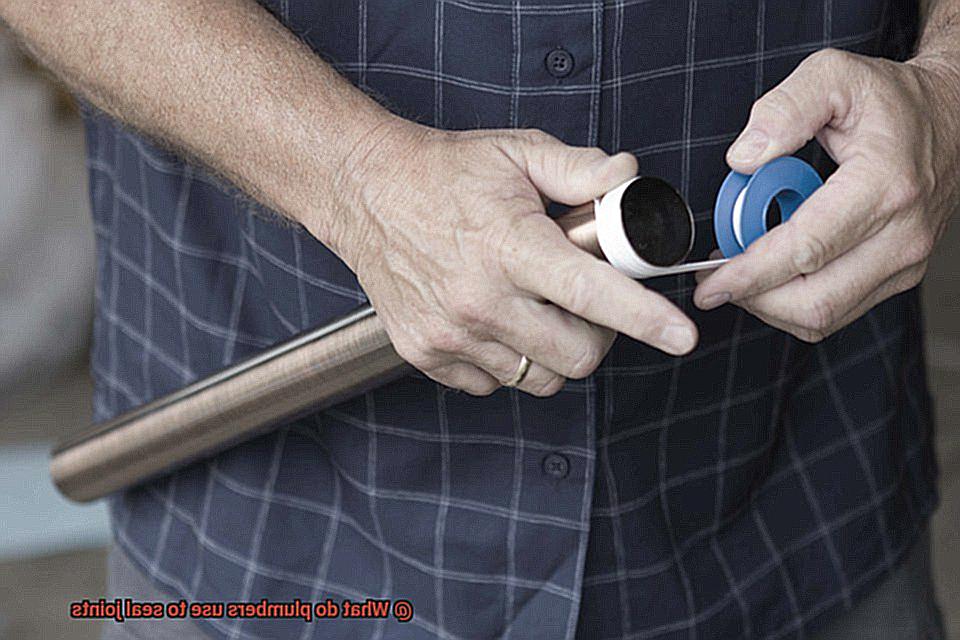
PEX pipes are flexible and easy to install, but they can’t be used outdoors or in direct sunlight. Galvanized steel pipes are strong and durable, but they can rust over time. It’s important to choose a pipe type that fits your needs and budget.
Joint Type
The type of joint you choose will depend on the pipe material and location. Soldered joints are commonly used with copper pipes, compression joints use a nut and ferrule to tighten the joint together, threaded joints use threads on the pipe and fittings to create a tight seal, and glued joints use a special adhesive to bond the pipes together. Each joint type has its own advantages and disadvantages, so it’s important to choose the one that best suits your needs.
Sealant Type
The next factor to consider is the type of sealant you will use. Tape is a common sealant used with metal pipes like copper or steel. Putty is ideal for plastic pipes as it can conform to the shape of the joint, and glue is used for plastic pipes and bonds them together at the joint. Each type of sealant has its own unique properties, so it’s important to choose the one that will provide the best seal for your specific needs.
Plumbing System Needs
Another important consideration is the specific needs of your plumbing system. For example, if you have high water pressure or temperature fluctuations in your area, you may need different materials than someone who doesn’t have those issues. It’s important to consider all of the factors that could affect your plumbing system and choose materials that can withstand those conditions.
Professional Help
Finally, it’s always a good idea to consult with a qualified plumber when choosing materials for your plumbing system. A professional can help you determine the best materials for your specific needs and ensure that your plumbing system is installed correctly.
Common Mistakes When Sealing Joints
Before you begin, it’s crucial to avoid common mistakes that can lead to leaks and other issues. Here are some tips to ensure a reliable and long-lasting seal:
Firstly, make sure to properly clean the joint before sealing it. Dirt, grease or debris can prevent the sealant from adhering properly, leaving you with a weak seal prone to failure. Take your time to clean the joint thoroughly before applying sealant.
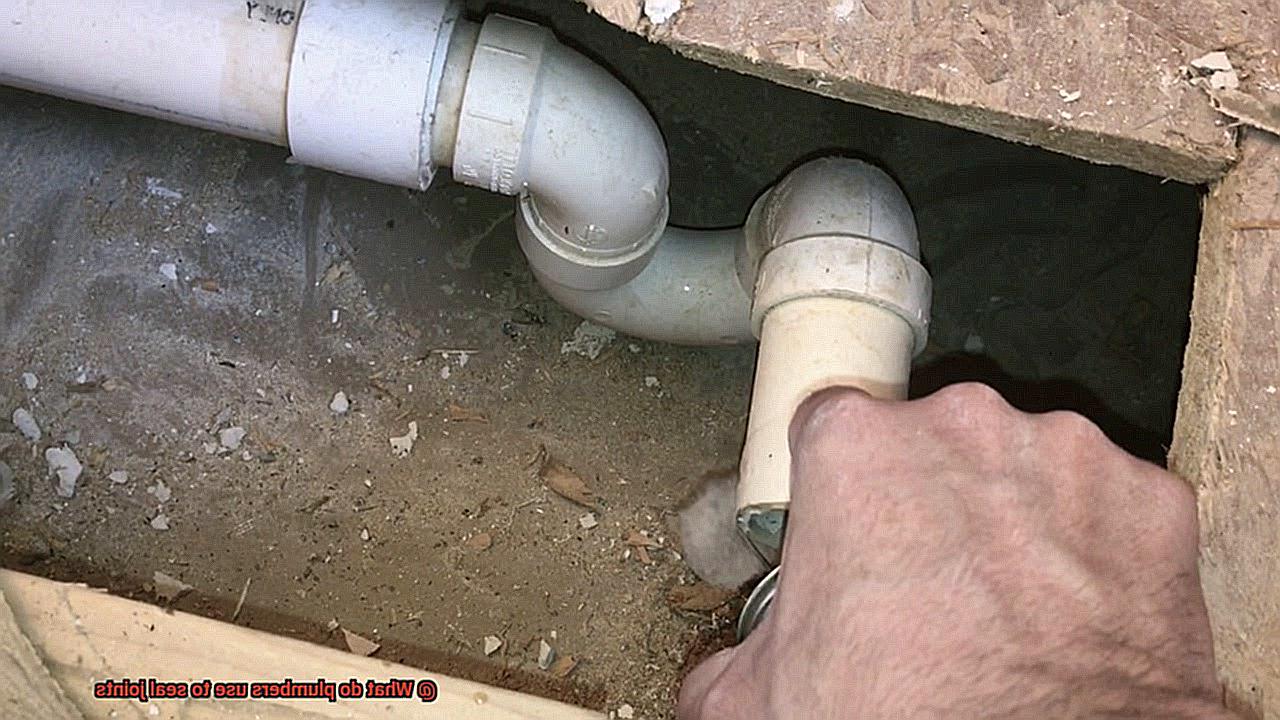
Secondly, be sure to select the right type of sealant for the job. Many different sealants are available, each with its specific strengths and weaknesses. Using the wrong type of sealant can cause poor adhesion, cracking and other problems that result in costly repairs.
Over-applying sealant is another common mistake that should be avoided. While it may seem like adding more will create a watertight seal, excess build-up can cause the joint to crack or leak over time. Instead, follow the manufacturer’s instructions and apply the recommended amount of sealant.
Finally, allow ample time for the sealant to dry properly before testing it out. Rushing this process can lead to a weak seal that’s prone to failure. Follow the recommended curing time to ensure a strong and secure seal.
By following these best practices for sealing joints, you can avoid common mistakes and ensure a reliable and long-lasting plumbing system. And if you’re not confident in your abilities, don’t hesitate to seek professional help from a qualified plumber who can guide you in making the best decisions for your unique situation.
Conclusion
In the world of plumbing, sealants are the unsung heroes that keep everything running smoothly. These materials are essential for sealing joints and preventing leaks in pipes and plumbing fixtures. Luckily, there are several types of sealants available on the market, including silicone, plumber’s putty, Teflon tape, rope sealant, and epoxy. Each of these sealants has its own specific use depending on the type of joint, the material of the pipes, and the intended use of the plumbing fixture.
Thread seal tape is a popular choice among plumbers for creating a watertight seal between two threaded components. Pipe dope or thread compound is another superhero among plumbing materials that fills any gaps or imperfections in the threads of pipes and fittings before they are connected.
Gaskets and O-rings create a tight seal between two surfaces, preventing any leaks or fluid loss. Adhesives like epoxy or PVC cement and sealants like silicone caulk fill gaps or spaces between surfaces to prevent fluid or air passage.
Choosing high-quality sealants and adhesives can make all the difference when it comes to preventing leaks, extending the lifespan of plumbing systems, saving on maintenance costs over time, and improving energy efficiency in homes and buildings. When selecting materials for your plumbing system, consider factors such as pipe type, joint type, specific needs of your plumbing system, sealant type, and professional help.
To ensure a reliable and long-lasting seal when using these materials to seal joints avoid common mistakes such as failing to properly clean joints before sealing them; choosing the wrong type of sealant for the job; over-applying sealant; not allowing ample time for the material to dry properly before testing it out.
By following these best practices for sealing joints with these materials you can avoid common mistakes and ensure a strong bond between surfaces that can withstand high pressure and temperature changes.
So, next time you’re faced with a leaky pipe or a faulty plumbing fixture, remember that the right sealant can make all the difference.

